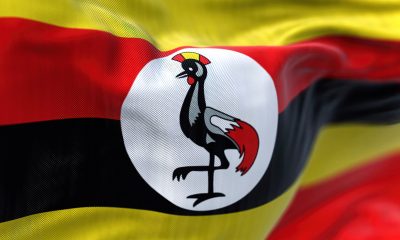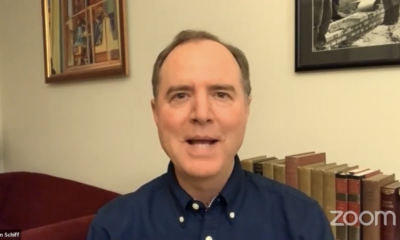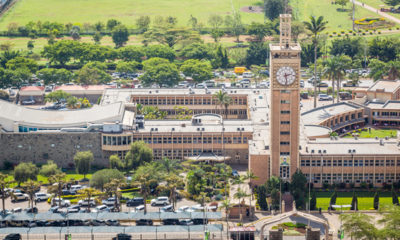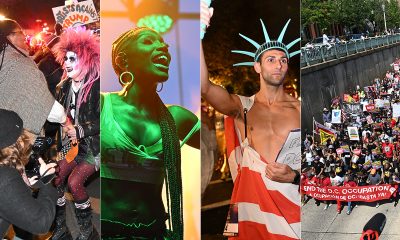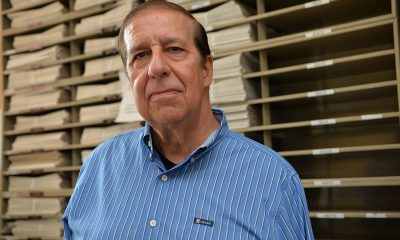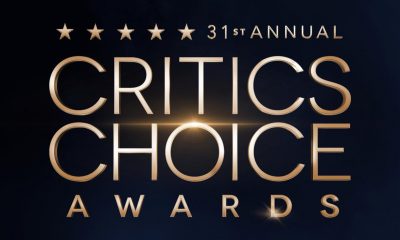Commentary
Queer parenthood explored: A transparent dive into surrogacy and hope
Matthew Schueller hosts ‘Who’s Your Daddy?’ podcast with husband
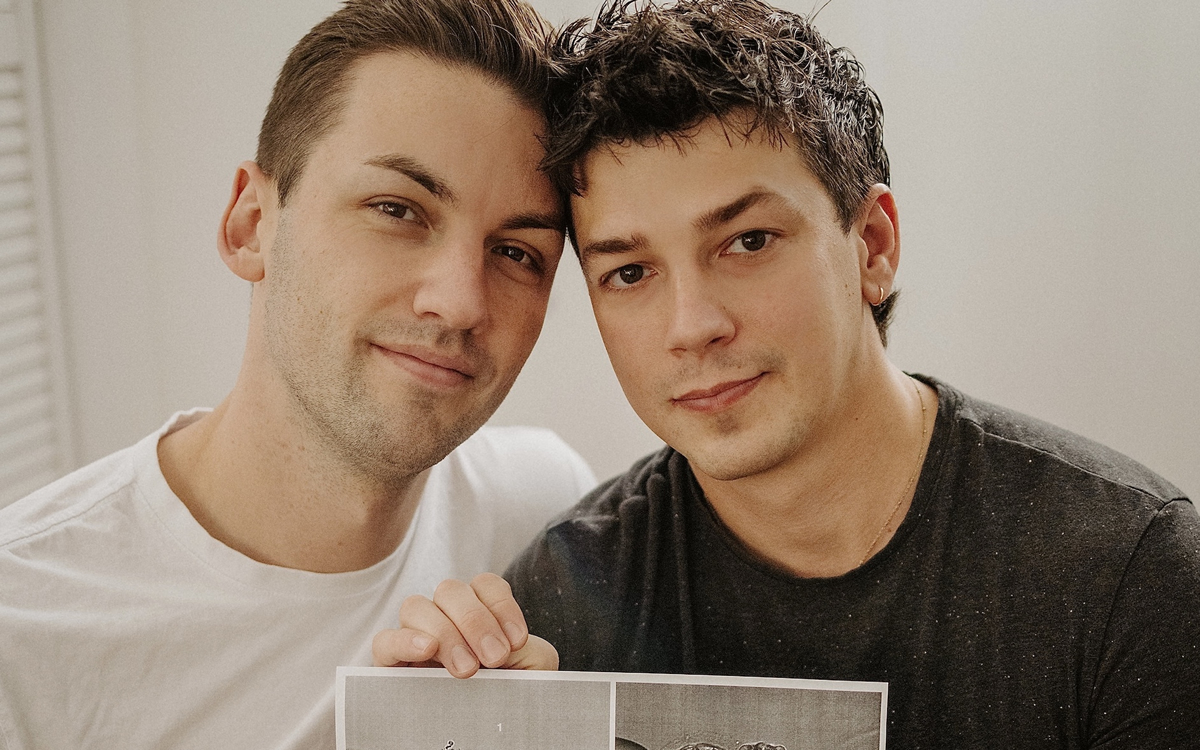
This is a guest commentary by Matthew Schueller for News is Out.
I feel extraordinarily lucky. As a kid, I never imagined my life could look like this. Growing up in the closet in the mid-Willamette Valley of Oregon, an area many consider to be the conservative Bible Belt of the Pacific Northwest, I didn’t think it was possible for me to find love, let alone get married. It’s humbling to see now that I’ve proved myself wrong. It is truly contrary to what I thought my life would be like 10 years ago, so to be here now in the process of starting a family is absolutely ridiculous to me. It already feels like a miracle, so the fact that we can even attempt to bring life into this world as a gay couple blows my mind.
I’ve always wanted to have kids, but I didn’t start seriously considering the possibility of surrogacy until I met Michael and our relationship became more serious. As I learned more about it and started looking into it more, I realized that it was the best path for us at the time. We started looking for an egg donor and surrogate mother at the beginning of 2021 when we officially made the decision to start the process.
That being said, we know it’s still not that easy. While it’s been around for a while, surrogacy is still riddled with mystery, inaccessibility, and unpredictability. What we quickly realized when we started to look at our options was that we didn’t know the first thing about starting a family as a queer couple, and neither did most of our friends and family! When we started researching online, we found a ton of different information (often conflicting) from a variety of sources. We didn’t even know where to start, so we began calling up IVF clinics and surrogacy agencies.
We spent months researching the process and figuring out what exactly this might look like for us, how much it would cost, and how we should mentally prepare. I think that’s what inspired us to start sharing. We saw a lot of couples online sharing their stories after the fact — after the babies had arrived and everything looked fantastic — but we didn’t see many couples sharing their stories as it was happening. To us, the process of surrogacy looked like a mysterious black curtain where most of the details were not quite clear.
Our goal is to share the process of having kids as a gay couple as it’s happening, the good and the difficult. We believe alternative paths to parenthood should be accessible to all queer couples, and we think that starts with shedding light on how these processes actually work. With knowledge, there’s power. And since many of us in the LGBTQ+ community don’t know the options available for family planning, we don’t know where to start to enact change.
Many paths to parenthood are largely considered to only be attainable by the extremely privileged and wealthy — but we know that gender, sexuality, and income level should not determine whether or not someone can have a family, so why is that not considered true for queer couples? There are a lot of big questions that have come up, so my husband, Michael, actually encouraged me to start a podcast with him to interview individuals who’ve experienced alternative paths to parenthood and experts who can provide insight and education. Thus, the birth of the “Who’s Your Daddy?” podcast.
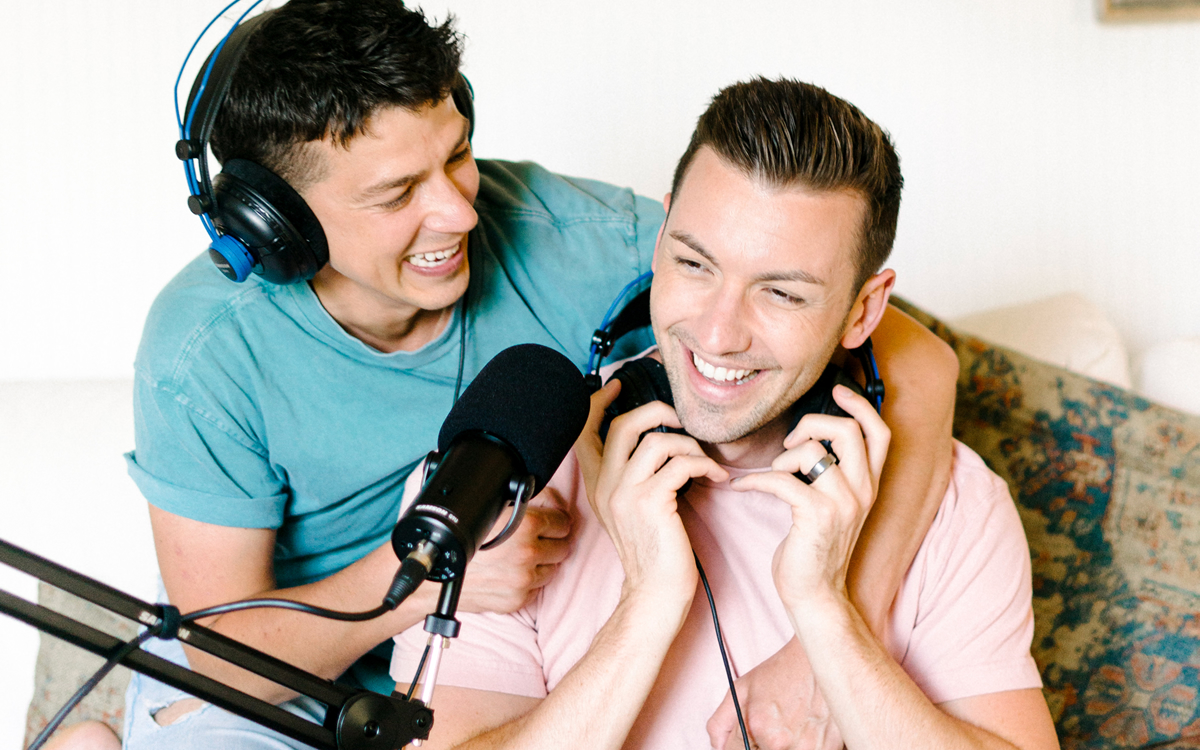
Over the last 19 months, we’ve found our egg donor, created embryos and actively sought our gestational carrier. While there have been many ups and downs, we are really excited for the next steps in hopefully finding our surrogate soon. The first difficult decision was trying to figure out where we would undergo the process. We interviewed quite a few surrogacy agencies and IVF clinics, and we connected well with a doctor in Texas. We just had a good feeling about it, so we went with our gut. At the time, we didn’t think much of where our egg donor or surrogate could be located: We thought it didn’t really matter if they were far away from us. We were under the impression that pursuing surrogacy in Texas might be significantly cheaper than on the West Coast, and perhaps lead to a quicker matching time since there are just way more people in the Dallas area than in the entire state of Oregon.
Our minds changed. As the clinic progressed through egg donation and embryo creation, we started to feel the distance weighing on us. Not only did the importance of being physically close to where our surrogate would be located but also we began reflecting on how the state laws could impact us. Just over the last year, Texas has taken sweeping action against access to abortion. So what does that mean for all those in the state considering being a surrogate? If pregnancy complications were to occur, how difficult would it be for a surrogate to access the needed medical care? It’s unclear. It’s understandable that the change in state law could cause concern for many considering becoming a gestational carrier and therefore limit the pool of people willing to carry in the state.
Legal implications aside, we want to be there for the ultrasounds, doctor’s appointments and of course the childbirth. Being far away from where our surrogate lives makes that difficult. Now, we recommend those considering surrogacy to look into your local laws, determine how those might impact you and then consider the closest reputable IVF clinics in your area before searching far away.
Our embryos were created last December. While 30 eggs were harvested, only five embryos made it to viability. I’m the genetic half of four of the embryos, while Michael is the genetic half to one. It was a difficult experience. On one hand, we were incredibly happy that we were able to produce five viable embryos. On the other hand, we’re extremely nervous. Our goal starting out was to have twins, each of us the genetic father of one. With only having one embryo on Michael’s side, that means there’s just one chance at a transfer. If it were to fail, we’re just not sure it’s financially feasible to repeat the IVF process and try for more embryos. So, we’re hopeful. Optimism can be powerful here, so we look at this as having five embryos–five wonderful chances to have a baby. We might not end up with twins like we first sought to do, but if we’ve learned one thing from this entire journey, it’s that we cannot control what we cannot control. Surrogacy and IVF are seriously unpredictable processes, and we’re just hopeful to see what miracle biology will bring.
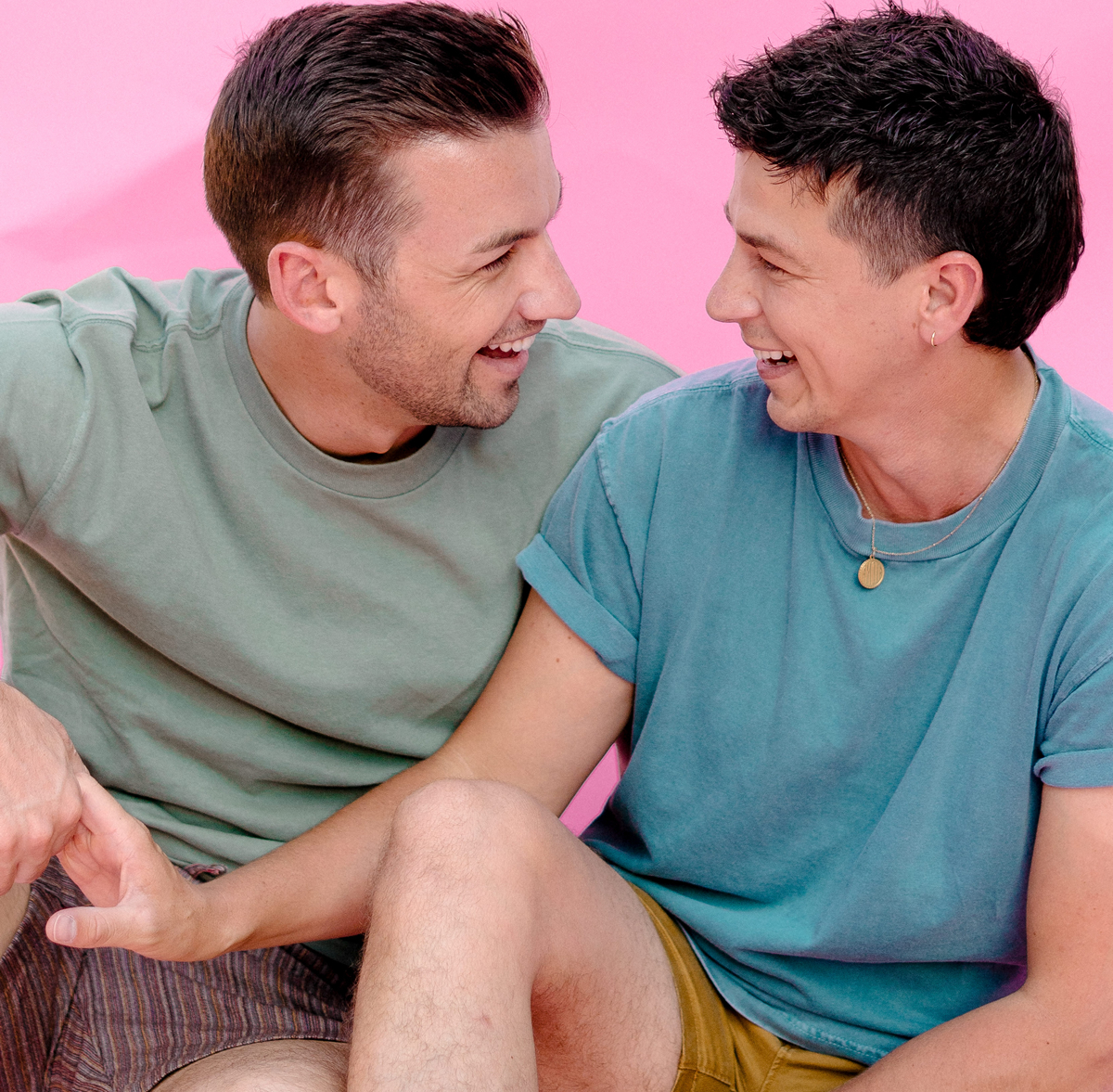
Matthew Schueller is a content creator and registered nurse. He hosts the “Who’s Your Daddy” podcast along with his husband, Dr. Michael Lindsay. You can follow @MichaelandMatt on Instagram, TikTok and YouTube.
Commentary
Protecting the trans community is not optional for elected allies and candidates
One of oldest political tactics is blaming vulnerable group for societal woes

Being an ally to the trans community is not a conditional position for me, nor should it be for any candidate. My allyship doesn’t hinge on polling, focus groups, or whether courage feels politically convenient. At a time when trans people, especially trans youth of color, are under coordinated attack, elected officials and candidates must do more than offer quiet support. We must take a public and solid stand.
History shows us how these moments begin. One of the oldest political tactics is to single out the most vulnerable and blame them for society’s anxieties — not because they are responsible, but because they are easier to blame than those with power and protection. In Nazi Germany, Jewish people were primarily targeted, but they were not the only demographic who suffered elimination. LGBTQ people, disabled people, Romani communities, political dissidents, and others were also rounded up, imprisoned, and killed. Among the earliest acts of fascistic repression was the destruction of Berlin’s Institute for Sexual Science, a pioneering center for gender-affirming care and LGBTQ research. These books and medical records were among the first to be confiscated and burned. It is not a coincidence that these same communities are now the first to suffer under this regime, they are our canaries in the coal mine signaling what’s to come.
Congress, emboldened by the rhetoric of the Donald Trump campaign, recently passed HR 3492 to criminalize healthcare workers who provide gender-affirming healthcare with fines and imprisonment. This bill, sponsored by celebrity politicians like Marjorie Taylor Greene, puts politics and headlines over people and health outcomes. Healthcare that a number of cis-gendered people also benefit from byway of hair regeneration and surgery, male and female breast augmentation, hormone replacement therapy etc. Even when these bills targeting this care do not pass, they do real damage. They create fear among patients, legal uncertainty for providers, and instability for clinics that serve the most marginalized people in our communities.
Here in D.C., organizations like Planned Parenthood and Whitman-Walker Health are lifelines for many communities. They provide gender-affirming care alongside primary care, mental health services, HIV treatment, and preventative medicine. When healthcare is politicized or criminalized, people don’t wait for court rulings — they delay care, ration medication, or disappear from the system entirely.
As a pharmacist, I know exactly what that means. These are life-saving medications. Continuity of care matters. Criminalizing and politicizing healthcare does not protect children or families — it puts lives at risk.
Instead of centering these realities, political discourse has been deliberately diverted toward a manufactured panic about trans women in sports. Let me be clear: trans women deserve to be protected and allowed to compete just like anyone else. Athletics have always included people with different bodies, strengths, and abilities. Girls and women will always encounter competitors who are stronger or faster — that is not a gender or sports crisis, it is the nature of competition.
Sports are meant to teach fairness, mutual respect, and the shared spirit of competition — not suspicion or exclusion. We should not police young people’s bodies, and we should reject attempts to single out trans youth as a political distraction. Families and doctors should be the authority on sex and gender identity.
This narrative has been cynically amplified by the right, but too often Democrats have allowed it to take hold rather than forcefully rejecting it. It is imperative to pay attention to what is happening — and to push back against every attempt to dehumanize anyone for political gain.
Trans people have always been part of our communities and our democracy. Protecting the most vulnerable is not radical — it is the foundation of a just society. My work is grounded in that commitment, and I will not waver from it. I’m proud to have hired trans political team Down Ballot to lead my campaign for DC Council At Large. We need more ally leaders of all stages to stand up for the LGBTQ+ community. We must let elected detractors know that when they come for them, then they come for all of us. We cannot allow Fox News and social media trolls to create a narrative that scares us away from protecting marginalized populations. We must stand up and do what’s right.
Anything less is not leadership.
Rep. Oye Owolewa is running for an at-large seat on the D.C. Council.
Commentary
America is going in the wrong direction for intersex children
Lawmakers are criminalizing care for trans youth, while permitting irreversible harm to intersex babies
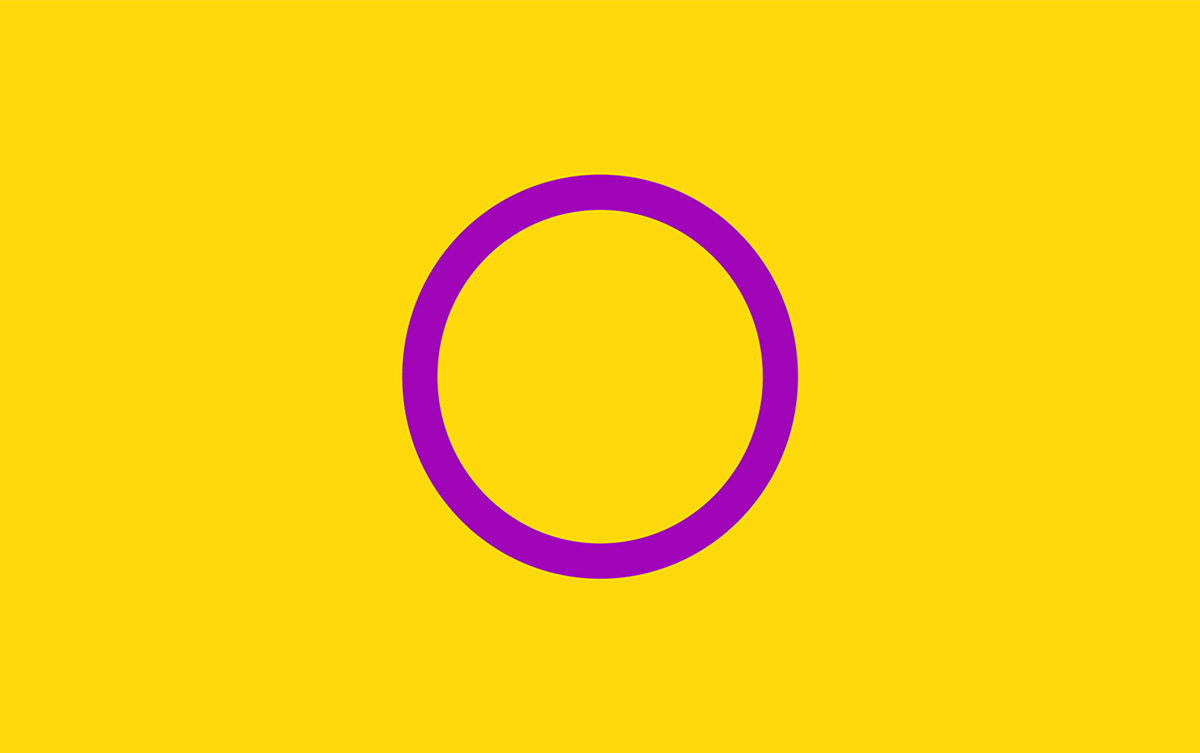
I live with the consequences of what America is willing to condone in the name of “protecting children.”
When I was young, doctors and adults made irreversible decisions about my body without my informed consent. They weren’t responding to an emergency. They were responding to discomfort with innate physical differences and the social and medical pressure to make a child’s body conform to a rigid female-male binary. That’s the part people like to skip over when they talk about “child welfare”: the harm didn’t begin with my identity. It started with adults deciding my healthy body needed fixing.
That’s why the hypocrisy unfolding right now from statehouses to Capitol Hill feels so familiar, and so dangerous.
While harmful medical practices on intersex children, the nearly 2 percent born with differences in one or more of their physical sex characteristics, have been ongoing in the U.S. for decades, until recently, there was no law specifically condoning it.
This month, House Republicans passed one of the most extreme anti-trans bills in modern American history, advancing legislation that would criminalize gender-affirming medical care for transgender youth and threaten doctors with severe penalties for providing evidence-based treatment. The bill is framed as a measure to “protect children,” but in reality, it weaponizes the criminal legal system against families and providers who are trying to support young people in surviving adolescence.
At the same time, the administration has proposed hospital and insurance policies designed to choke off access to affirming care for trans youth nationwide by making providers fear loss of federal funding, regulatory retaliation, or prosecution. This is a familiar strategy: don’t just ban care outright; instead, make it so risky that hospitals stop providing it altogether. The result is the same everywhere. Young people lose access to care that major medical associations agree can be lifesaving.
All of this is happening under the banner of preventing “irreversible harm.”
But if America were genuinely concerned about irreversible harm to minors, the first thing lawmakers would address is the medically unnecessary, nonconsensual surgeries still performed on intersex infants and young children, procedures that permanently alter healthy tissue, often without urgent medical need, and long before a child can meaningfully participate in the decision. Human rights organizations have documented for years how these interventions are justified not by medical necessity, but by social pressure to make bodies appear more typically “female” or “male.”
Here is the uncomfortable truth: all of the state laws now banning gender-affirming care for transgender youth explicitly include exceptions that allow nonconsensual and harmful intersex surgeries to continue.
A recent JAMA Health Forum analysis found that 28 states have enacted bans on gender-affirming care for minors that carve out intersex exceptions, preserving doctors’ ability to perform irreversible “normalizing” procedures on intersex children even while prohibiting affirming care for trans adolescents.
This contradiction is not accidental. It reveals the real priority behind these laws.
If the goal were truly to protect children from irreversible medical interventions, intersex kids would be protected first. Instead, these policies target one group of children, transgender youth, while continuing to permit permanent interventions on another group whose bodies challenge the same rigid sex and gender binary that lawmakers are trying to enforce.
Intersex people are routinely erased from American policy debates, except when our bodies are invoked to justify harmful laws, warning that intersex children are being used as legal loopholes rather than protected as human beings. This “protect the children” rhetoric is routinely deployed to justify state control over bodies, while preserving medical practices that stripped intersex children like me of autonomy, good health, and choice. Those harms are not theoretical. They are lifelong.
What makes this moment even more jarring is that the federal government had finally begun to recognize intersex people and attempt to address the harms suffered.
In 2024, at the very end of his term, the Biden administration released the first-ever intersex health equity report — a landmark admission that intersex people have been harmed by the U.S. health care system. Issued by the Department of Health and Human Services, the report documents medically unnecessary interventions, lack of informed consent, and systemic erasure and recommends delaying irreversible procedures until individuals can meaningfully participate in decisions about their own bodies.
This should have been a turning point. Instead, America is moving in the opposite direction.
On day one, President Trump issued an executive order defining “sex” in a way attempting to delegitimize the existence of transgender Americans that also erased the existence of many intersex people.
When medicine is used to erase difference, it is called protection, while care that supports self-understanding is treated as a threat. This is not about medicine. It is about control.
You cannot claim to oppose irreversible harm to children while legally permitting surgeries that intersex adults and human rights experts have condemned for decades. You cannot claim to respect bodily autonomy while denying it selectively, based on whose bodies make lawmakers uncomfortable.
Protecting children means protecting all children, transgender, intersex, and cisgender alike. It means delaying irreversible interventions when they are not medically necessary. It means trusting and supporting young people and families over politicians chasing culture-war victories.
America can continue down the path of criminalizing care for some children while sanctioning harm to others, or it can finally listen to the people who have lived the consequences.
Intersex children deserve laws that protect their bodies, not politics that hurt and erase them.
Kimberly Zieselman is a human rights advocate and the author of “XOXY: A Memoir”. The author is a co-author of the JAMA Health Forum article cited, which examined state laws restricting gender-affirming care.
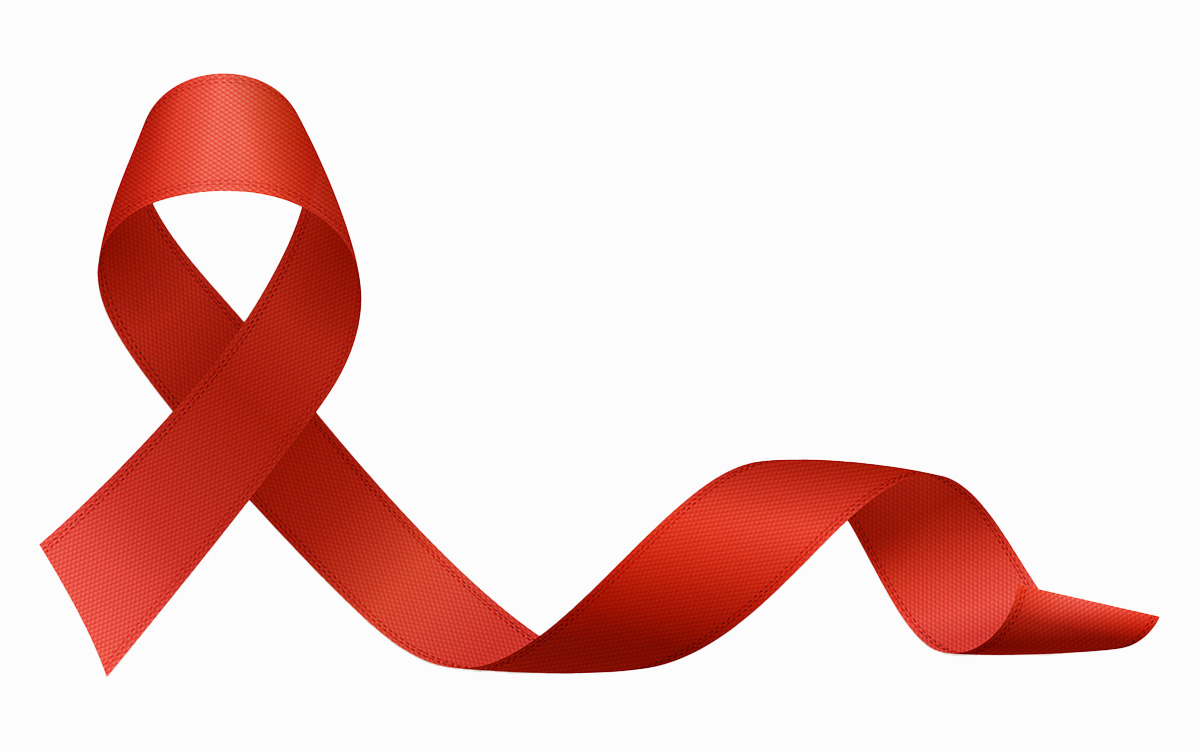
Today, on World AIDS Day, we honor the resilience, courage, and dignity of people living with HIV everywhere especially refugees, asylum seekers, and queer displaced communities across East Africa and the world.
For many, living with HIV is not just a health journey it is a journey of navigating stigma, borders, laws, discrimination, and survival.
Yet even in the face of displacement, uncertainty, and exclusion, queer people living with HIV continue to rise, thrive, advocate, and build community against all odds.
To every displaced person living with HIV:
• Your strength inspires us.
• Your story matters.
• You are worthy of safety, compassion, and the full right to health.
• You deserve a world where borders do not determine access to treatment, where identity does not determine dignity, and where your existence is celebrated not criminalized.
Let today be a reminder that:
• HIV is not a crime.
• Queer identity is not a crime.
• Seeking safety is not a crime.
• Stigma has no place in our communities.
• Access to treatment, care, and protection is a human right.
As we reflect, we must recommit ourselves to building systems that protect not punish displaced queer people living with HIV. We must amplify their voices, invest in inclusive healthcare, and fight the inequalities that fuel vulnerability.
Hope is stronger when we build it together.
Let’s continue to uplift, empower, and walk alongside those whose journeys are too often unheard.
Today we remember.
Today we stand together.
Today we renew hope.
Abraham Junior lives in the Gorom Refugee Settlement in South Sudan.
-

 Photos4 days ago
Photos4 days agoThe year in photos
-

 Sponsored3 days ago
Sponsored3 days agoSafer Ways to Pay for Online Performances and Queer Events
-

 District of Columbia2 days ago
District of Columbia2 days agoTwo pioneering gay journalists to speak at Thursday event
-

 a&e features2 days ago
a&e features2 days agoQueer highlights of the 2026 Critics Choice Awards: Aunt Gladys, that ‘Heated Rivalry’ shoutout and more

